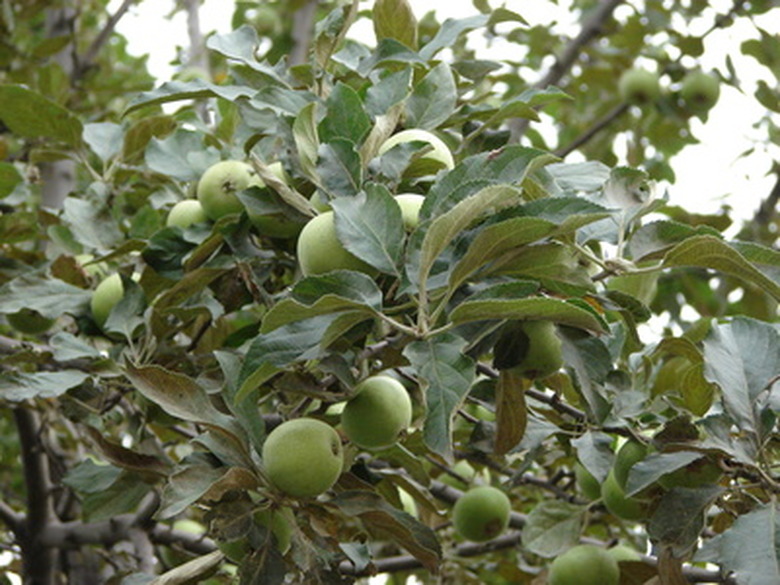What Is The Habitat Of An Apple Tree?
Apple trees are commonly grown in home gardens, according to Texas A&M University. There are many types, or cultivars, of apples, and while these can vary widely in size, shape and color and taste of the fruit, they do not vary much in their habitats and cultural needs. All apple trees have specific environmental care needs to remain healthy and produce high-quality fruit.
Apple trees are commonly grown in home gardens, according to Texas A&M University. There are many types, or cultivars, of apples, and while these can vary widely in size, shape and color and taste of the fruit, they do not vary much in their habitats and cultural needs. All apple trees have specific environmental care needs to remain healthy and produce high-quality fruit.
Origin
The native habitat of the modern apple tree (Malus sylvestris var. domestica) is the subject of minor debate among scientists, according to the University of Maine. Many believe that it originated from Kazakhstan, where wild apple trees still grow in the forests. Others think that apple trees were brought to Europe from the Caucasus Mountains by traders who traveled along the silk trail. Still others believe the modern (or "table") apple tree is a descendant of Malus sylvestris, which is a wild crabapple tree native to Northern Europe.
- Apple trees are commonly grown in home gardens, according to Texas A&M University.
- Still others believe the modern (or "table") apple tree is a descendant of Malus sylvestris, which is a wild crabapple tree native to Northern Europe.
Climate
The biggest difference in habitats among types of apple trees is the temperatures in that habitat. Many cultivars of apples are developed to be cold-hardy, surviving in the colder U.S. Department of Agriculture (USDA) plant hardiness zones. Some are bred to survive the wilting heat of hotter growing zones. Braeburn, for example, is a popular variety that will grow in USDA zone 4, and in fact, will also grow in warm climates to USDA zone 10. In general, most apple trees do best in USDA zones 5 through 8.
Light
Apple trees grow best in habitats where they are exposed to bright sunlight. A full day's worth of sun will allow the trees to bloom best and develop prolific fruit. Early morning sun is especially important, as it will quickly dry the dew from the leaves. Water left sitting on the leaves of apple or other fruit trees can lead to fungal diseases such as leaf spot. Apple trees that are overshadowed and shaded by structures will grow stunted and may not flower very well or even at all.
- The biggest difference in habitats among types of apple trees is the temperatures in that habitat.
- Some are bred to survive the wilting heat of hotter growing zones.
Soil
The habitat of an apple tree should ideally contain rich, sandy loam or clay soil, according to Ohio State University. More importantly, the soil should be very well-draining, as overly wet or soggy soil can lead to root rot. Apple trees thrive best in soil with a pH level of around 6.5.
Location
Apple trees need a habitat that is protected from late spring frosts. Even the cold-hardiest trees can be damaged if the tender spring flowers are exposed to freezing temperatures. The site should be warm, with no exposure to strong winter winds. In addition, the trees should not be crowded in among other plants or be too close to other apple trees, as each tree needs good air circulation around it to help dry the leaves and avoid the fungal diseases.
- The habitat of an apple tree should ideally contain rich, sandy loam or clay soil, according to Ohio State University.
- In addition, the trees should not be crowded in among other plants or be too close to other apple trees, as each tree needs good air circulation around it to help dry the leaves and avoid the fungal diseases.
